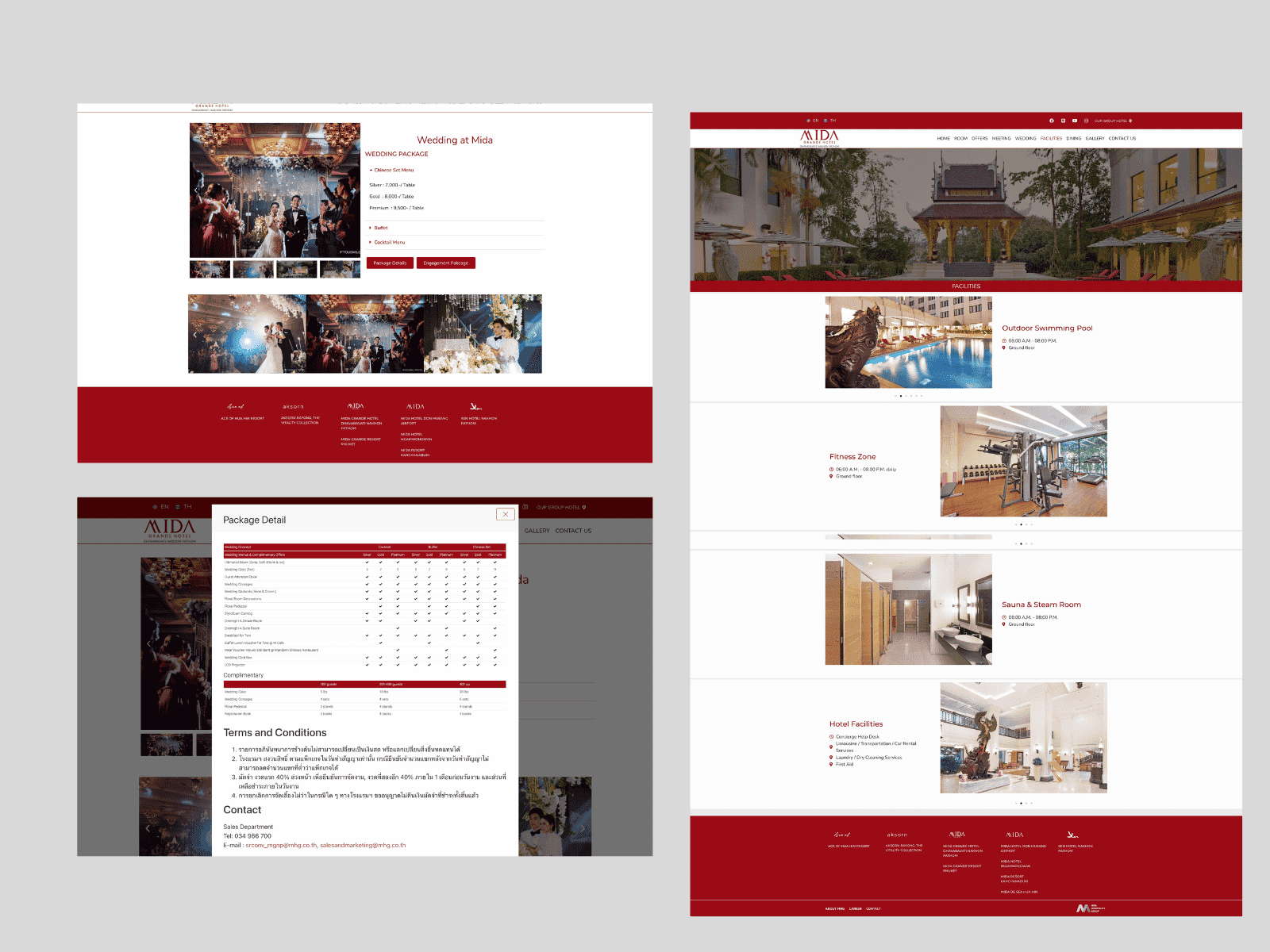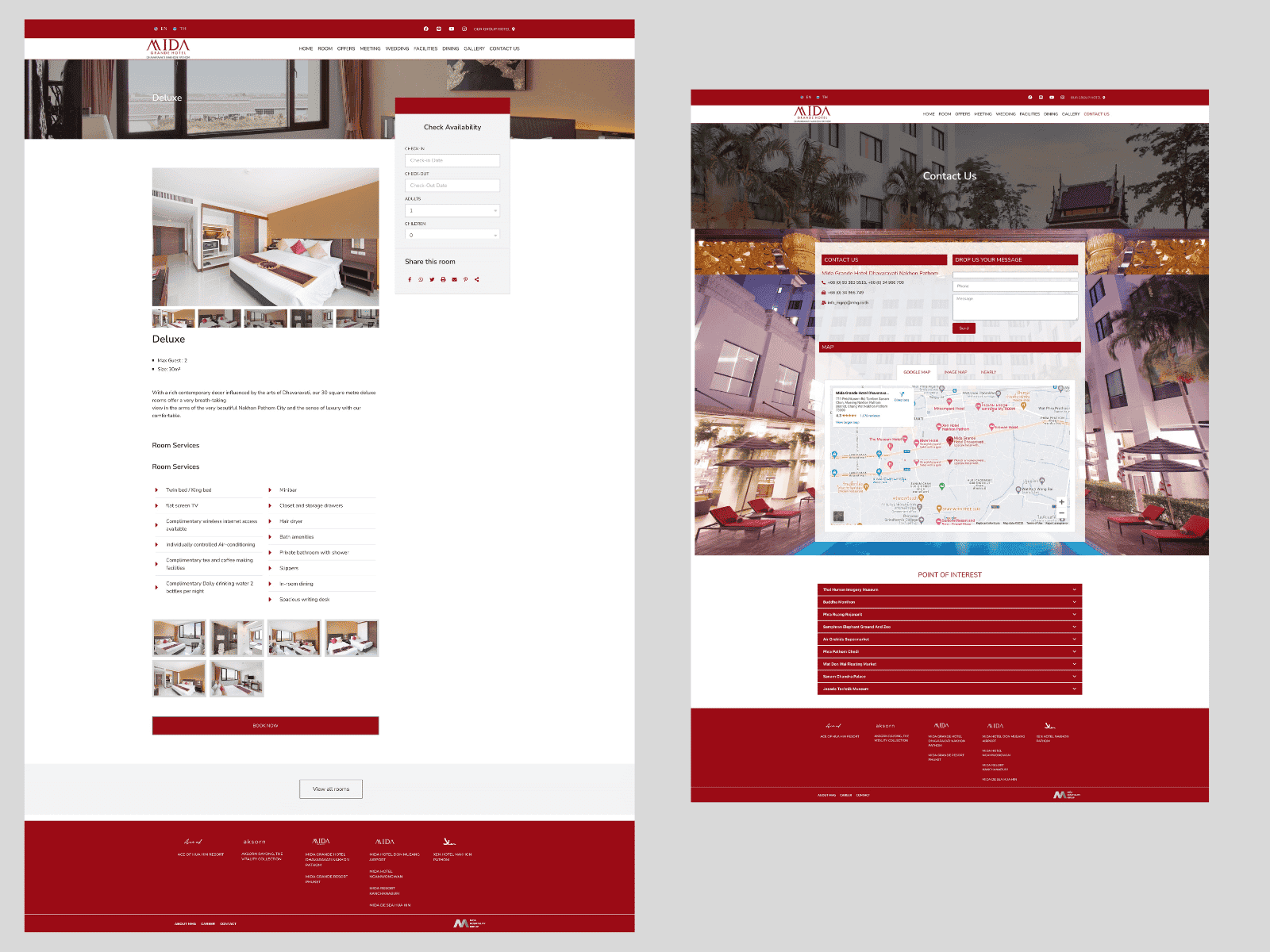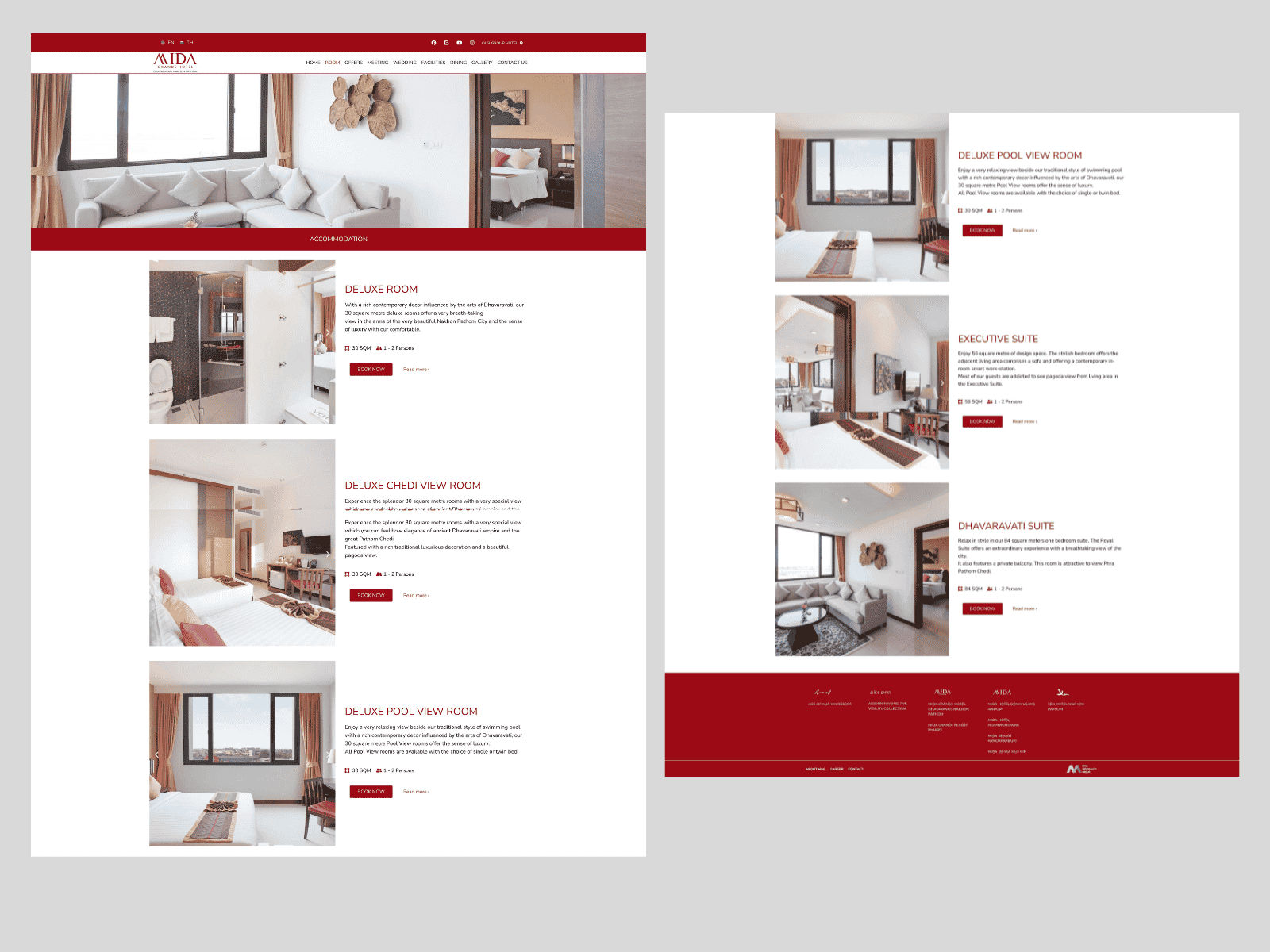Creating a website for Mida Grande Hotel Dhavaravati involves a series of strategic steps to ensure the site not only showcases the hotel’s unique offerings but also provides a user-friendly experience for visitors. Here’s a step-by-step guide to designing an effective hotel website:
1. Planning and Strategy Development
- Identify Objectives: Define what the website aims to achieve (e.g., increase bookings, showcase amenities, highlight location).
- Target Audience Analysis: Understand the demographics, preferences, and behaviors of the hotel’s target market.
- Competitor Analysis: Review competitors’ websites to identify strengths, weaknesses, and opportunities for differentiation.
2. Content Development
- Site Map Creation: Outline the structure of the website, including main navigation items and sub-pages.
- Content Writing: Develop compelling and SEO-friendly content for each page, focusing on the hotel’s unique selling points (USPs), amenities, and services.
- High-Quality Imagery: Select or commission professional photos of the hotel, including rooms, facilities, and nearby attractions.
3. Design and User Experience (UX)
- Wireframe Design: Create wireframes for each page to plan the layout and user flow without design elements.
- Visual Design: Based on the hotel’s branding, develop the visual design, including color scheme, typography, and imagery.
- Responsive Design: Ensure the design is mobile-friendly and provides a seamless experience across all devices.
4. Development and Integration
- CMS Selection: Choose a Content Management System (CMS) that allows for easy updates and management of the website content.
- Booking Engine Integration: Integrate a reliable booking engine to facilitate direct reservations through the website.
- SEO Optimization: Implement on-page SEO best practices, including meta tags, headings, and keyword-rich content.
5. Testing and Quality Assurance
- Functionality Testing: Test all interactive elements, such as forms and booking processes, across different browsers and devices.
- Performance Testing: Ensure the website loads quickly and efficiently, optimizing images and scripts as necessary.
- User Testing: Conduct user testing with a sample of the target audience to gather feedback on usability and overall experience.
6. Launch and Promotion
- Soft Launch: Initially launch the website to a limited audience to gather early feedback and make necessary adjustments.
- Official Launch: Announce the website launch through marketing channels, including email newsletters, social media, and press releases.
- Ongoing SEO and Content Updates: Continuously optimize the website for search engines and update content to keep it fresh and engaging.
7. Maintenance and Analytics Monitoring
- Regular Maintenance: Schedule regular check-ups to update software, fix broken links, and ensure security measures are up to date.
- Analytics Monitoring: Use tools like Google Analytics to monitor website traffic, user behavior, and conversion rates, adjusting strategies as needed.
By following these steps, Mida Grande Hotel Dhavaravati can create a website that not only beautifully represents the hotel but also drives bookings and enhances the guest experience even before they arrive.


